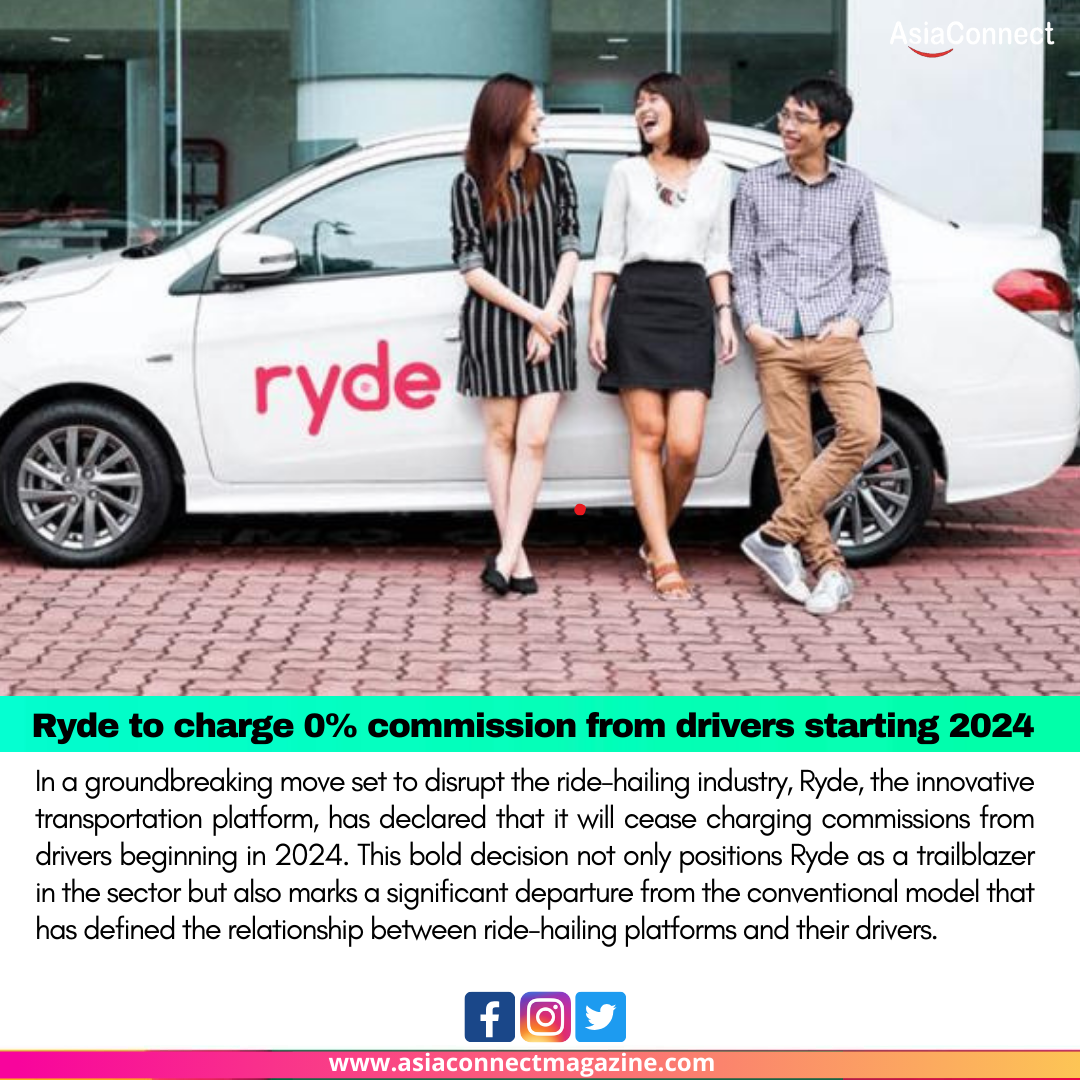In a groundbreaking move set to disrupt the ride-hailing industry, Ryde, the innovative transportation platform, has declared that it will cease charging commissions from drivers beginning in 2024. This bold decision not only positions Ryde as a trailblazer in the sector but also marks a significant departure from the conventional model that has defined the relationship between ride-hailing platforms and their drivers.
Driver-Centric Model:
Ryde’s commitment to a driver-centric model is at the core of this announcement. By eliminating commissions, the company aims to empower drivers, allowing them to retain a larger share of their earnings. This shift acknowledges the pivotal role drivers play in the success of ride-hailing platforms and seeks to create a more equitable and sustainable partnership.
Industry Norms and Challenges:
Traditionally, ride-hailing platforms have operated on a commission-based model, with drivers paying a percentage of their earnings to the platform. This standard practice has been a source of contention, leading to protests and calls for more favorable terms for drivers. Ryde’s decision challenges these norms and addresses some of the challenges faced by drivers in the industry.
Empowering Drivers Financially:
Ryde’s move to forgo commissions is a strategic decision aimed at fostering a stronger bond with drivers. By allowing drivers to retain 100% of their fares, the platform not only provides a significant financial boost to individual drivers but also enhances their overall job satisfaction and loyalty to the platform.
This approach aligns with the evolving expectations of gig economy workers who seek fair compensation and greater control over their earnings. The decision to eliminate commissions reflects Ryde’s commitment to creating a more sustainable and inclusive ride-hailing ecosystem.
Competitive Edge and Market Dynamics:
Ryde’s announcement also has implications for its competitive positioning in the market. In an industry where attracting and retaining drivers is a critical success factor, this move may set Ryde apart from its competitors. The company is positioning itself as a driver-friendly alternative, potentially attracting a larger pool of drivers who are seeking platforms that prioritize their financial interests.
Furthermore, this decision may trigger a ripple effect in the industry, prompting other ride-hailing platforms to reevaluate their commission structures and consider more favorable terms for drivers.
Challenges and Sustainability:
While the announcement is undoubtedly a positive development for drivers, questions about the sustainability of a commission-free model arise. Ryde will likely need to explore alternative revenue streams or innovative business models to compensate for the revenue traditionally generated through driver commissions.
The success of this initiative depends on Ryde’s ability to strike a balance between providing competitive earnings for drivers and maintaining the financial viability of the platform. This challenge necessitates a careful navigation of market dynamics and an ongoing commitment to adapting to the evolving needs of both drivers and riders.
Community and Rider Impact:
The commission-free model is not only beneficial for drivers but also has potential positive implications for riders. With drivers receiving a larger share of their earnings, there is an opportunity for Ryde to attract experienced and motivated drivers, ultimately leading to improved service quality and overall customer satisfaction.
Conclusion:
Ryde’s decision to eliminate driver commissions from 2024 is a bold and innovative move that challenges industry norms and places the company at the forefront of driver-centric ride-hailing platforms. The success of this initiative will depend on Ryde’s ability to navigate the complex landscape of the gig economy, address financial sustainability concerns, and maintain its commitment to both drivers and riders. As the ride-hailing industry witnesses this paradigm shift, it opens up new possibilities for more equitable and sustainable business models in the future.





